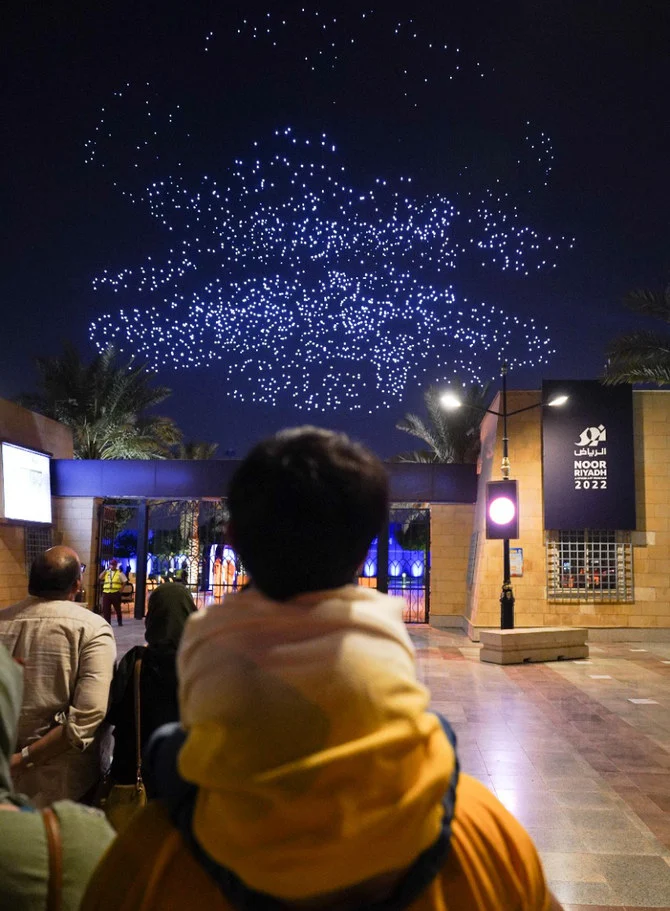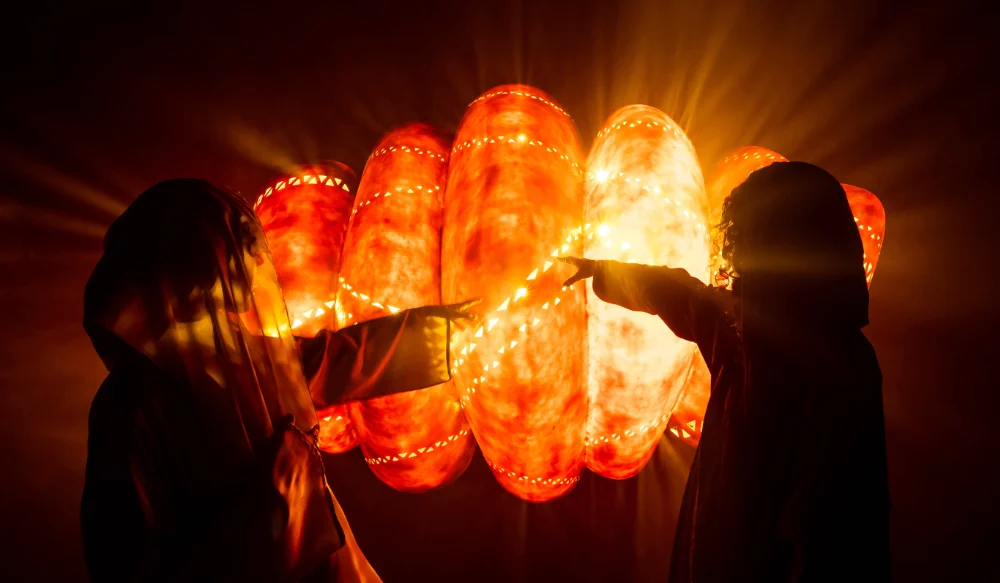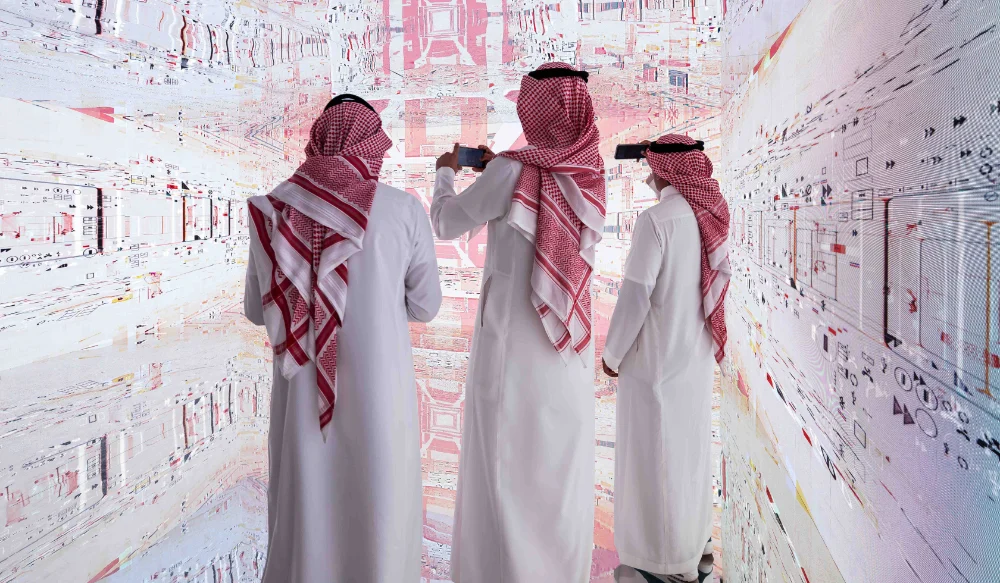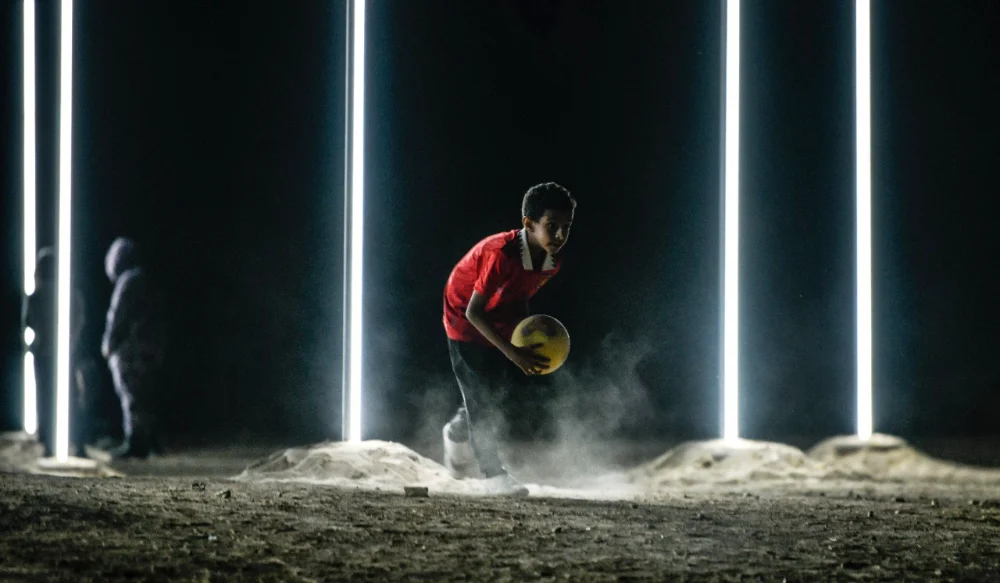RIYADH: Noor Riyadh wrapped up its cultural and artistic events on Saturday, after setting six Guinness World Records, including for largest celebration of light arts.
The 17-day festival achieved five other records for the artwork titled “Pulse of Light” — longest distance covered for a light laser display, largest light laser display, highest and largest display on a building interface, and largest number of drones participating in a creative art show.
The installations were part of the annual festival of light and art featuring more than 190 works by 130 Saudi and international artists from more than 40 countries.

The 'Noor Riyadh 2020', which ended on Saturday (November 20), sets six world records in the 'Guinness World Records.' The image depicts the work of American artist Mark Brickman, titled Organized Chaos. (Supplied)
Noor Riyadh is the first such festival implemented under the auspices of Riyadh Art, the first public art initiative in the Kingdom. It aims to transform the capital into a “gallery without walls,” to beautify it and enhance the creative spirit among the population.
The festival, which opened on Nov. 3, has contributed to enriching the Kingdom’s cultural and artistic landscape by receiving more than 2.8 million visitors.
It presented 500 different events in 40 locations throughout the Saudi capital, including King Abdullah Park in the Malaz neighborhood, Alsafarat neighborhood, Diriyah Historical Town and King Abdullah Financial District.
Noor Riyadh owes much of its success to the insight and care of Crown Prince Mohammed bin Salman, which enabled the celebration to become the world’s largest in the field of light arts.
“This success would not have been possible without God’s grace,” said Prince Badr bin Abdullah bin Farhan, minister of culture, member of the board of directors of the Royal Commission for Riyadh City, and chairman of the steering committee of Riyadh Art.
“The achievements of the Noor Riyadh are a clear demonstration of the Kingdom’s commitment and continued efforts to support national and international talents and to embrace the greatest celebrations that contribute to placing the Kingdom at the forefront of the global art landscape,” Prince Badr added.
He emphasized the importance of continuing efforts to strengthen partnerships with all relevant parties in the future.
Noor Riyadh’s celebrations will be accompanied by an exhibition titled “From Rays to Passion,” which will be held in the Jax neighborhood and will run until Feb. 4, offering visitors an artistic journey of creative light transformation in the past and future, through the continuation of workshops and dialogues presented by elite artists and experts.

The 'Noor Riyadh 2020', which ended on Saturday (November 20), sets six world records in the 'Guinness World Records.' The image depicts the work of Saudi artist Huda Al-Aythan, titled Najd Al-Khasheaa. (Supplied)

The 'Noor Riyadh 2020', which ended on Saturday (November 20), sets six world records in the 'Guinness World Records.' The image depicts the work of Turkish artist Rafeeq Anadool, titled Dream of Machine. (Supplied)

The 'Noor Riyadh 2020', which ended on Saturday (November 20), sets six world records in the 'Guinness World Records.' The image depicts the work of artist Giesele Colon, titled One Thousand Galaxies. (Supplied)


























